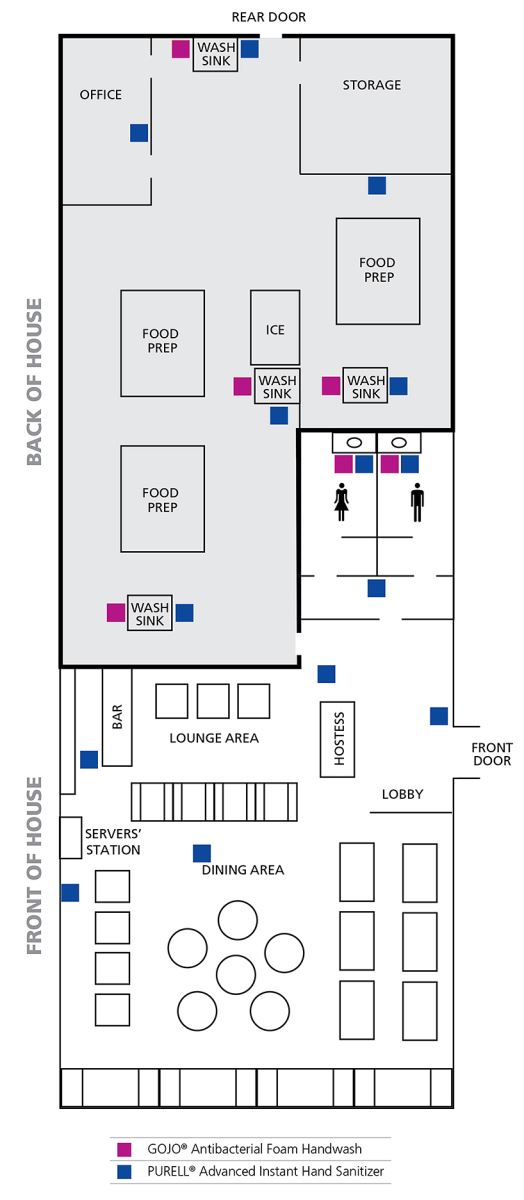
Food Safety is in Your Hands
Your guests expect a clean, healthy and safe dining experience when they visit your business. And with the risks associated with foodborne illness, you can’t take chances or shortcuts when it comes to handwashing. According to the CDC, 89% of foodborne illness outbreaks in restaurants were caused by food that was contaminated by food workers who spread germs with their hands. Safe food handling starts with proper hand hygiene.
It is crucial to stress the importance of handwashing since your brand reputation is at stake. Your business’s bottom line could be affected if food safety issues arise. Also, if guests see dispensing systems and soap products, they will know you’re committed to the wellness of your customers and employees.
Food safety training can help make hand hygiene part of a daily routine. Through team meeting reminders, posters, videos and monitoring, you can clearly demonstrate when, how and where (not in a food prep or service sink) to wash and sanitize hands. By highlighting a complete hand hygiene regimen, you are building a culture of compliance.
When to Wash
Employees are more apt to wash their hands at the appropriate times when hand soaps, sanitizers and dispensers are easily accessible in the right places. The U.S. Food and Drug Administration (FDA) advises that hands be washed:
- When entering a food preparation area
- Before putting on clean, single-use gloves for working with food and between glove changes
- Before starting food preparation
- Before handling clean equipment and serving utensils
- When changing tasks and switching between handling raw foods and working with ready-to-eat foods
- After handling soiled dishes, equipment or utensils
- After touching bare parts of the body (e.g., parts other than clean hands and clean, exposed portions of arms)
- After using the toilet
- After coughing, sneezing, blowing the nose, using tobacco, eating or drinking
- After caring for or handling services animals or aquatic animals such as molluscan shellfish or crustacea in display tanks
Key Areas
Take a look at the restaurant map below for recommendations on where to have soaps and sanitizers handy. It is best for employees to use both antibacterial soap and sanitizer as a one-two punch. And to make sure those products are always available in the quantities that you need, talk to us about our facility services offerings.

Infographic source: GOJO
PEOPLE YOU CAN COUNT ON®
Learn how we make your life easier with brand-building solutions to keep your employees and facilities looking their best.



